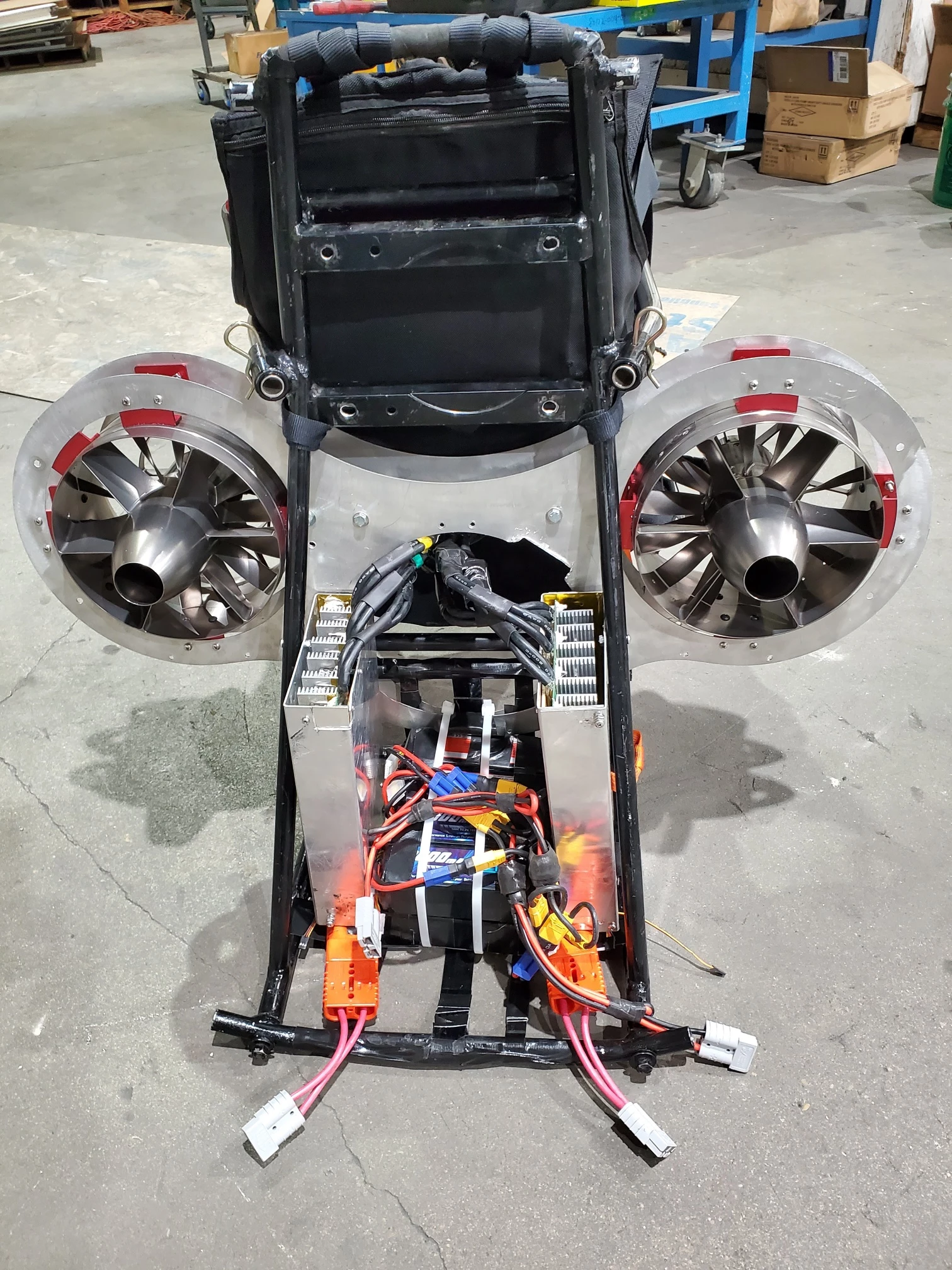Indiana's Pete Bitar has quite a few pots on the boil right now. Between prototyping his LEO Coupe eVTOL "flying supercar," developing directed energy weapons for the US Military through his XADS company, manufacturing electric ducted fans, selling heavy-lift drones through his Vertipod company, working on small personal flight vehicles, and developing and testing electric jetpacks, among other things, you'd think he'd have his hands full.
Not too full, though, to give parts of the LEO's propulsion system a second home in an electric paraglider system. Bitar's spent plenty of time with parachutes in the past; before XADS stood for Xtreme Alternative Defense Systems, it stood for Xtreme Ads, a business in which Bitar painted adverts on parachutes. The Canop-E had to happen.
This prototype started out as a test for two of the six forward propulsion jets designed for the LEO eVTOL. Weighing in at 57 lb (26 kg), it comprises a seat, two 216-mm ducted fans, a harness, and a 100-V, 18-Ah, 1.8-kWh battery pack mounted in a simple frame. To the top, one attaches a 28-m (92-ft) parachute canopy, and from there it functions like a regular paramotor rig.

Bitar and his team have test-flown the Canop-E, claiming an endurance of around 20 minutes for the prototype, and a top speed somewhere around 70 mph (110 km/h).
Electric paramotors are not new, but Bitar says typically they're much bulkier than this, with single propellers shrouded by a protective cage that need some teardown or folding to fit in a car. The Canop-E, he says, needs no further safety gear around its ducted electric turbines, and can be thrown in the seat or the trunk of a car as it is, ready to hook up and fly.
"The plan is to offer a higher end, novelty CanopE-Jet 1, and a lower cost, ducted propeller CanopE-Jet Light," Bitar told us. "Not including paraglider, the Light model will sell for US$8,995 and the CanopE-Jet 1 will sell for $18,995. I think we'll open up pre-orders soon on CanopE-Jet, because I think we can start delivering units by Q3 of this year."
In other news, Bitar says he's completed a seed round of funding for the LEO eVTOL project, and "should be flying the LX-1 manned prototype by May." And while he can't say too much about the electric jetpack at the moment, "that's a very cool project, and getting cooler all the time." See the Canop-E fly in the video below.
Source: Electric Jet Aircraft







